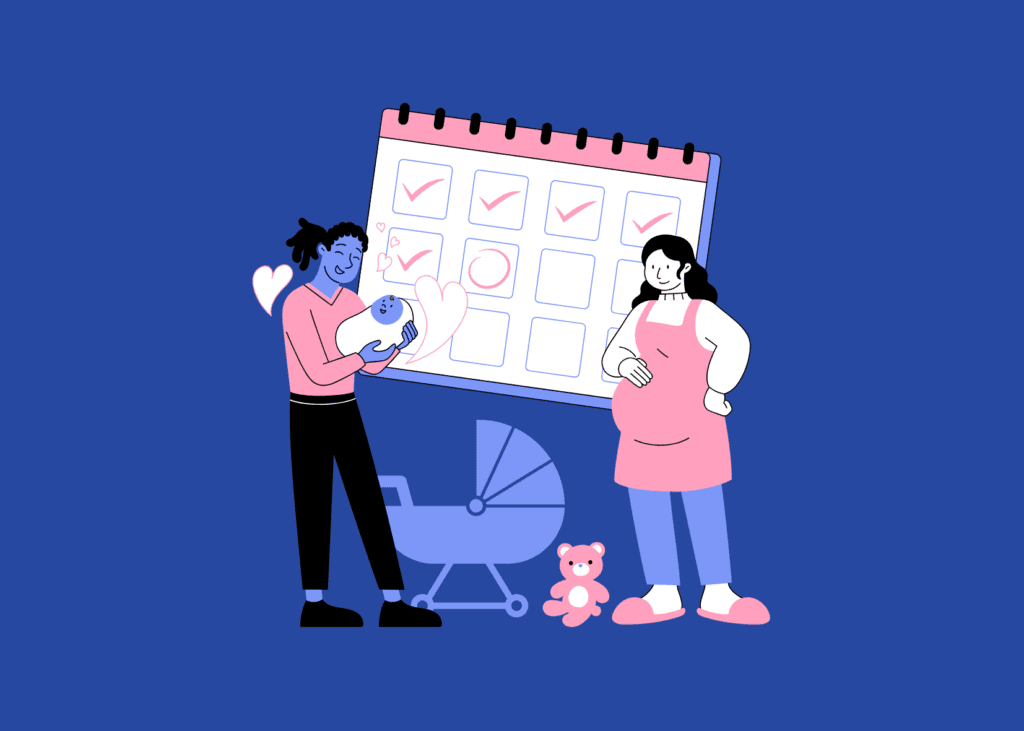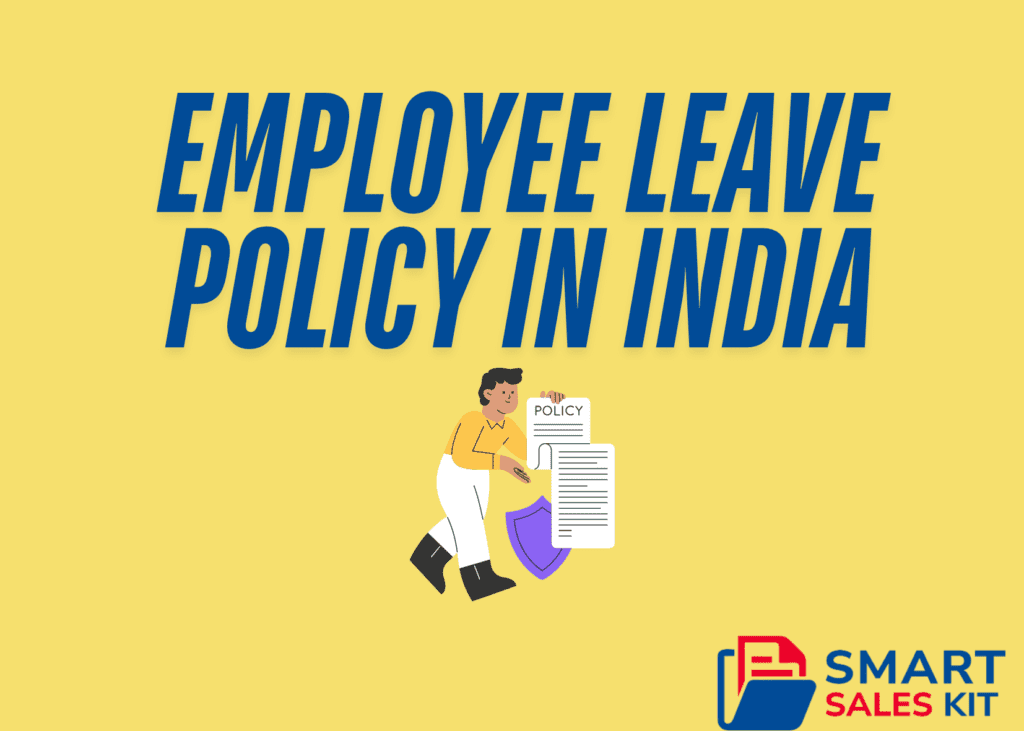Table of Content
What is an Employee Leave Policy?
An employee leave policy is a set of guidelines that have been formulated by a company to provide and monitor leaves or time-off taken by their employees. Usually documented and followed through by HR professionals, a company can create their employee leave policy according to the standard laws of their location.
An employee leave policy in India contains the following sections:
Types of Leave Offered:
Different organizations approves different types of leaves. This differentiation comes in handy when deciding how many number of days is permitted for the reason of a leave.
Eligibility Criteria:
An eligibility criteria simply exists to make sure the leaves provided to an employee are for the right and necessary reason. In simple terms, a maternity leave can be provided to a pregnant employee of the company who has worked for at least 80 days in the 12 months before the date of her expected delivery.
Leave Entitlements:
Leave entitlement means the number of leaves or day offs an employee is allowed to have in an annual year. These are included in an employee leave policy as to list down leaves for employees to make sure they have time to recover, rest and bounce back better to their professional environment.
Leave Application Process:
Each company has a different process of how they submit and accept leave applications. To make it simplified, a leave application process is put in place that lists down the process of filling out a leave application form, specifying the type of leave, the duration, and the reason for the leave to the right person in charge.
Approval Process:
After submitting the leave application comes the leave approval process. It is usually either reviewed and approved by a manager or an HR professional. This process includes evaluation of the reason of leave, employee’s past leaves and balance leaves, timing and schedule impact of the day of absence.
Leave Balances and Tracking:
As mentioned above, when an HR or a manager goes through the approval process they look for the employee’s leave balances. Leave balances simply mean how many days off an employee has taken and has left. This is done via tracking systems to avoid errors in calculations, payroll discrepancies and higher productivity.
Integration with Payroll:
Manual calculation and management of leaves with payroll can be taxing and a wastage of time. Hence payroll integration with a leave management system helps automatically reflect leave in their salaries. With this integration, you can be sure that employees are paid appropriately for the time they put in and that any additions or deductions (such as cashing in a leave of absence) are handled correctly.
Policy for Unused Leave:
Unused leaves are whenever an employee has leftover leaves that are assigned to them by the company. Once unused, employees can choose to carry the leaves forward, encash them or accumulate them and use it for a long vacation.
Why is an Employee Leave Policy in India Important?
In India, a employee leave policy plays an important role for maintaining a sense of uniformity, fairness, and legal compliance in the workplace. In order to avoid any kind of misunderstandings and conflicts, an employee leave policy in India clearly describes the various kinds of leaves (such as earned, maternity, sick, and casual leave) to which employees are entitled. This policy helps employees to take time off without affecting their job security, which comes in handy in unexpected situations like medical emergency, personal obligations, or much needed vacations . A well-designed employee leave policy creates a productive and happy workplace by keeping employers and employees in sync.
Important Laws Regarding Employee Leaves in India
Here are some important laws regarding and governing employee leaves in India:
Factories Act, 1948
Usually applied for factories, the Factories Act, 1948 is a compilation on safety and wage standards for workers. It regulates their working hours, protects their health and well being so that workers are not overly worked up and face health issues. Some few important provisions under this Act are:
-employing children under 14 years of age in factories is strictly prohibited
-workers who are employed for an average of 240 days in a year are entitled to one paid leave every 20 days
-daily working hours should not be more than 9 hours; weekly working hours should not be more than 48 hours
-proper implementation of lighting, drainage system, first aid, ventilation, temperature, drinking water with safe preparation, sufficient toilets and urinals
-every 5 hours of constant work, a rest period of minimum 30 minutes
Maternity Benefit Act, 1961
This Act promotes the health of both mothers and children by guaranteeing that women have enough time to heal and take care of their babies without facing financial hardships.
Under this Act:
-26 weeks of paid parental leave for the initial two kids.
-Paid leave for 12 weeks starting with the third child.
-12 weeks off for commissioning/adoptive mothers.
-Businesses with more than fifty employees must provide creche services, with up to four visits each day.
-6 weeks off following a medical termination or miscarriage.
-Moms get nursing breaks till their child is 15 months old.
Shops and Establishments Act
Another law in place used for the protection of the right of employees is the Maharashtra Shops and Establishments (Regulation of Employment and Conditions of Service) Act, 2017. It regulates the rules and regulations of working and employment in shops, hotels, restaurants, eating houses, theatres, other places of public amusement or entertainment and commercial & other establishments.
-requires each employee to take one day off per week.
-after 12 months of continuous service, requires 15 days of paid annual leave.
-offers 8–12 days of sick and casual leave per year, depending on the state.
-provides for overtime compensation at double the ordinary rate for hours beyond the allotted maximum.
-makes certain that there are enough lights, air, and restrooms for workers.
-calls for the documentation of employment, pay, and leave records by employers.
Payment of Gratuity Act, 1972
Gratuity is the amount an employer has to pay their employee for their term that has exceeded a certain amount of years as a form of “gratitude”. Any organization with a team of more than 10 individuals and above is liable to pay gratuity. It is usually paid when an employee retires, is disabled/ demised, resigns, is terminated or chooses VRS.
-employees are required to have given the company a minimum of 5 full years of service.
-the amount of earned leave that can be redeemed upon retirement or termination is taken into account into the total amount of gratuities.
-within 30 days of retirement or termination, the gratuity is due.
-no limit on the total number of leave days that can be encashed under the Act.
-offers a supplementary monetary compensation for any unused leave at the conclusion of work.
The Employees’ Provident Funds and Miscellaneous Provisions Act, 1952
Employee Provident Fund (EPF) is a welfare scheme designed to make sure a better financial future for employees. Employers and employees both are required to contribute to the Fund under the Employees’ Provident Fund Scheme (EPF Scheme). This is a legally mandated benefit that is accessible to current employees only upon retirement or termination of employment. Unfortunately if an employee passes away, their family members will be technically eligible for benefits.
-The employee and employer each contribute 12% of the employee’s base salary and dearness allowance to the EPF.
-Employees receive an entire amount, including accrued interest, only when they retire; their family is eligible for these payouts if the employee expires.
-The current annual EPF interest rate is 8.15%, and the interest earned is tax-free.
-Employees are given a unique Universal Account Number (UAN) that is valid for life and is connected to their EPF account, making transfers of accounts unnecessary when changing employers.
-The Employees’ Pension Scheme (EPS) receives 8.33% of the employer’s contribution, while 3.67% goes to EPF.
-Employees making up to Rs.15,000 in basic salary and expense allowances are automatically qualified; those earning more than Rs.15,000 can participate by signing in within six months of employment.
Types of Employee Leaves in India
Statutory Leaves
1. Annual Leave / Earned Leave (EL):
 An annual/earned leave is a fully paid time off that an employee can earn or are provided by their employer based on their days of the week they work and/or timings. These leaves can be used however an employee wants and needs no approval or application.
An annual/earned leave is a fully paid time off that an employee can earn or are provided by their employer based on their days of the week they work and/or timings. These leaves can be used however an employee wants and needs no approval or application.
-Employees are entitled to earned or yearly leave if they have worked for a minimum of 240 days in a year.
-Employees typically earn 1 day of leave for every 20 days working, for a total of 15–18 days of leave annually.
-There is typically a maximum amount of unused paid time off that can be carried over to the next year (e.g., 30 days or as per business policy).
-Employees can cash in any unused paid time off when they retire, quit, or at certain periods, such as the end of the fiscal year.
-If a public holiday falls during the leave period, it is not included in the earned leave calculation.
-Employees who take annual or earned leave are compensated in full, meaning they are paid as usual throughout this time.
-Usually, earned leave needs management approval and previous notice, particularly for prolonged periods of time.
2. Sick Leave (SL):
 A sick leave is when an employee calls in sick to travel to work and/or work from home. Annually, an employee could get anywhere between 8 to 12 days of sick leaves depending on state and a company’s employee leave policy in India. Sometimes an HR professional might require a medical note or certificate for records.
A sick leave is when an employee calls in sick to travel to work and/or work from home. Annually, an employee could get anywhere between 8 to 12 days of sick leaves depending on state and a company’s employee leave policy in India. Sometimes an HR professional might require a medical note or certificate for records.
-For prolonged leaves, a medical certificate can be needed.
-While it is normally not possible to cash in unused sick leave, it may at times be carried forward.
-The majority of employees are entitled to six to twelve paid sick days annually.
-Paid sick leave is in full.
-Certain companies provide extra advantages connected to health.
-When taking sick time, employees should notify their employer as soon as possible.
3. Maternity Leave:
 The Maternity Benefit Act of 2017 in India allows women to take time off both before and after giving birth by offering paid leave. Here are some benefits women employees have under this Act:
The Maternity Benefit Act of 2017 in India allows women to take time off both before and after giving birth by offering paid leave. Here are some benefits women employees have under this Act:
-For the first two children, there will be 26 weeks of paid maternity leave (8 weeks prior to delivery and 18 weeks following).
-For the third child and beyond, 12 weeks of paid maternity leave (6 weeks prior to delivery, 6 weeks following delivery).
-12 weeks of leave are given to commissioning mothers and adoptive moms (for children under 3 months old).
-WFH option following maternity leave, depending on mutual consent.
-Crèche facilities are required for employers with 50 or more workers, and up to 4 visits per day are permitted.
-3,500 rupee medical bonus in the event that the employer does not offer free medical care.
-Maternity leave must be announced in advance, however benefits are unaffected by delayed notice.
-You can take two nursing breaks a day until the child turns 15 months old
4. Paternity Leave:
 As the name suggests, males employees who have become new fathers are eligible for such a leave. According to the new Paternity Leave (Amendment) Regulations 2024, [effective from March 8, 2024 and applies to children born or adopted after April 6, 2024]:
As the name suggests, males employees who have become new fathers are eligible for such a leave. According to the new Paternity Leave (Amendment) Regulations 2024, [effective from March 8, 2024 and applies to children born or adopted after April 6, 2024]:
-Fathers can apply for one or two weeks of paternity leave.
-Leave can be taken at any time during the 52 weeks following the child’s birth or adoption.
-Employees now only need to give 28 days’ notice before taking leave, rather than the former minimum of 15 weeks before the scheduled birth.
-Leave can be taken in a single span of one or two weeks, or in two repeated one-week periods.
5. Public Holidays:
 The Government of India has a defined list of public holidays, which are legally mandatory days off for all employees in India. These include both national and state-specific holidays, including as Independence Day, Republic Day, and Gandhi Jayanti among many more. Employees are rarely required to work on these days, and if they do, they can often be eligible for compensatory leave or additional pay.
The Government of India has a defined list of public holidays, which are legally mandatory days off for all employees in India. These include both national and state-specific holidays, including as Independence Day, Republic Day, and Gandhi Jayanti among many more. Employees are rarely required to work on these days, and if they do, they can often be eligible for compensatory leave or additional pay.
Discretionary Leaves
 1. Casual Leave (CL)
1. Casual Leave (CL)
Casual leave is a short-term leave option available to employees for personal reasons or minor situations. Most employees have the right to 7-10 days of casual leave annually, depending on their state and company policy. This vacation is frequently provided on short notice and cannot be transferred over to the next year.
2. Bereavement Leave:
 Employees are granted time off following the unfortunate death of a family member, which is known as a bereavement leave. Based on the relationship, situational impact and corporate employee leave policy in India, 3–7 days are usually provided to the employee to take some time to grieve and heal before joining back work. If a member of their immediate family passes away, some companies may offer prolonged leave.
Employees are granted time off following the unfortunate death of a family member, which is known as a bereavement leave. Based on the relationship, situational impact and corporate employee leave policy in India, 3–7 days are usually provided to the employee to take some time to grieve and heal before joining back work. If a member of their immediate family passes away, some companies may offer prolonged leave.
3. Marriage Leave:
Leave Without Pay (LWP)
 1. Extended Leave Without Pay:
1. Extended Leave Without Pay:
An unpaid leave is usually granted to employees who have finished using their paid leaves but still need s few more days off. An employer usually requires prior discussion with the employee to jot down the duration of this leave.
2. Sabbatical Leave:
 As of right now, Indian companies are not required by law to grant their employees sabbatical vacation. However, taking a sabbatical leave is processed in the same way as any other type of leave. Employees who take sabbatical leave are still eligible to keep their jobs and benefits and can use the time off to pursue personal hobbies, further their education, or advance their careers.
As of right now, Indian companies are not required by law to grant their employees sabbatical vacation. However, taking a sabbatical leave is processed in the same way as any other type of leave. Employees who take sabbatical leave are still eligible to keep their jobs and benefits and can use the time off to pursue personal hobbies, further their education, or advance their careers.
Other Leaves
 1. Comp-Off:
1. Comp-Off:
Comp-Off, or compensatory leave, is usually given to employees who work on a public holiday or their day off, allowing them to take a day off later as compensation. Typically, this leave must only be used within a set period, usually within 1-3 months after the ay of extra work. This policy helps makes sure fairness and prevents burnout by compensating for time worked on holidays.
2. Mental Health Leave:
 Mental Health Leave is time off specifically for employees to address and heal from mental health issues like stress, anxiety, or depression. Pertaining to how stressful corporate culture and travel can get, such days can give employees time to bounce back to work healthier. This leave is becoming more common and necessary as awareness of mental health grows. It typically requires a doctor’s note and could last from a few days to several weeks, depending on the seriousness of the issue.
Mental Health Leave is time off specifically for employees to address and heal from mental health issues like stress, anxiety, or depression. Pertaining to how stressful corporate culture and travel can get, such days can give employees time to bounce back to work healthier. This leave is becoming more common and necessary as awareness of mental health grows. It typically requires a doctor’s note and could last from a few days to several weeks, depending on the seriousness of the issue.
3. Menstrual Leave:
 In India, there is no centralized policy for “paid menstruation leave” or a specific law managing menstrual leave. Menstrual leave policies for employees have been implemented by a few Indian companies, such as Zomato, which in 2020 announced that it will offer a 10-day paid period vacation annually. Other businesses have also adopted this strategy in their employee leave policy in India, including Swiggy and Byjus.
In India, there is no centralized policy for “paid menstruation leave” or a specific law managing menstrual leave. Menstrual leave policies for employees have been implemented by a few Indian companies, such as Zomato, which in 2020 announced that it will offer a 10-day paid period vacation annually. Other businesses have also adopted this strategy in their employee leave policy in India, including Swiggy and Byjus.
4. Voting Leave:
 Every Indian citizen who is at least 18 years old is eligible to vote. Hence businesses and companies inside this voting eligibility are required by the Representation of People Act, 1951, to officially declare a holiday on election day. This guarantees that all employees receive impartial and paid leave and follow a fair employee leave policy in India.
Every Indian citizen who is at least 18 years old is eligible to vote. Hence businesses and companies inside this voting eligibility are required by the Representation of People Act, 1951, to officially declare a holiday on election day. This guarantees that all employees receive impartial and paid leave and follow a fair employee leave policy in India.
Steps to Create an Employee Leave Policy in India
1) Research and Review Indian Labor Laws
In every country, especially India, the labor laws are solely created to serve and protect the basic rights of employees and workers. Hence, not being compliant to these laws in your employee leave policy in India can land any organization in serious trouble, including fines and punishments. This is why the first step in creating an employee policy in India is making sure that the company is aware about the different laws and their compliance. This requires thorough consultation with HR and legal experts to get accurate information.
2) Take Into Consideration the Size and Nature of Your Company
It is very unusual that a one size fits all technique might be the smart choice when making an employee leave policy in India. Many leaves and their benefits are sometimes in regards to the nature, size, timing and environment of a company. It’s usually noted that smaller companies and startups have a more flexible and easier policy in comparison to a much bigger workforce where there are stringent policies. For example Zomato coming from a food tech industry with most of their employees having to travel outdoors daily have flexible leave options to have a healthy work-life balance. Whereas other major MNCs like Reliance or TCS have more complex and structure leave policies.
3) Define Types of Leaves and Entitlements You Wish to Provide
Employers do have flexibility to choose what holidays and entitlements they want to offer their employees. However, having any leave policy that doesn’t abide by the basic rules and regulations of the laws laws is legally troublesome. To avoid this, HR professionals need to categorize and segregate the types of legally mandatory leaves from the additional considerable leave and entitlements like menstrual leaves, leaves for marriage or a sabbatical. This prevents confusion and helps employees understand their rights and benefits in a prior manner.
4) Create a Smooth Leave Application and Approval Process
Clear understanding of the process of applying for a leave, reviewing it’s reasons and approving/rejecting the leave is a must. In this way, there is no confusion for both the employee or the person in charge of the approval process. It includes having a clearly defined process, requests for proof of leave, [medical certificates, travel information, etc.]. A well researched and professionally created employee leave policy in India consists all this necessary information. Smart Sales Kit helps you with a complete and efficiently documented employee leave policy that has proven beneficial for many companies. Head on to their website to know how you can too have this and many such policies and agreements created just for you.
5) Add Clear Guidelines and Provisions
After you have a good application and leave process in place, jot down all the guidelines, provisions, exemptions, and rules for the employee taking a specific leave. This could be what an employee needs to do before they go for their leave, specifications of being eligible for a certain leave, how a leave can be accrued, rules for application, etc. This openness increases confidence and lowers the possibility of disagreements, improving the efficacy and fairness of the policy.
6) Finalize and Implement the Document
Now that your policy is drafted, finalize it after having it reviewed by authorities like stakeholders or HR professionals. Once this is approved, have it formally documented and make sure it is well communicated within your employee circle and have it attached to a proper location on the cloud, employee handbook or company website so it is visible to all. You can also have the employee leave policy and it’s procedures explained thoroughly before onboarding or during training sessions.
Conclusion
Creating an employee leave policy in India isn’t just about following the law—it’s key to building a supportive and productive workplace. A good policy helps employees feel valued, knowing they have the time they need for personal, health, and family matters. As you develop your policy, make sure it meets legal requirements and fits your company’s culture, with flexibility where it’s needed.
Smart Sales Kit is an excellent tool for streamlining your company’s leave policy and guaranteeing smooth operations. With more than 3000 sales and business documents, including detailed and customizable documents for employee leave policies, it makes it easier to create professional, understandable policies that are suited to your company’s requirements. Whether you’re managing holidays, sick leave, or other types of time off, Smart Sales Kit helps you stay organized and compliant, making it an essential resource for any business.
FAQs
1. What are the leave rules for employees in India?
State laws and the type of business determine the specific leave rules in India, however they often include paid time off, earned leave, and sick leave. A set amount of paid leave days are allotted to employees annually, and they can be used for personal or medical needs. Employers are required by law to ensure that workers receive the time off that is granted to them by following certain guidelines.
2. What is the basic leave policy?
Sick leave, casual leave, and annual/earned leave are typically covered under a basic leave policy. It describes the number of days that an employee may take for each kind of leave, how leave is accrued, and how to apply for leave. This policy guarantees job stability while allowing employees to take time off for emergencies, personal health needs, or other reasons.
3. What is the mandatory leave policy?
Employers are required by India’s mandated leave laws to offer specific kinds of leave, including maternity, sick, and annual/earned leave. The Factories Act and the Shops and Establishments Act, among other labor laws, specify these leave benefits. To guarantee that workers receive the leave to which they are legally entitled, employers must adhere to these minimal standards.
4. How much paid leave can employees take in India?
The type of leave and the organization determine how much paid leave is awarded. Employees usually have the following benefits: six to twelve days of sick leave, fifteen to eighteen days of annual/earned leave, plus extra time off for public holidays and maternity leave. Depending on state regulations and business practices, the precise amount may change.
5. Is leave salary mandatory?
Indeed, for paid leaves such as maternity, sick, and yearly leave, leave salary is required. This implies that during these vacation periods, employees are paid their usual salaries. By law, employers must make sure that employees receive the appropriate compensation for the period they spend on leave, in accordance with their leave entitlements.
6. What is the leave policy in a PVT Ltd company?
The employee leave policy in India of a Private Limited (PVT Ltd) company usually complies with the regulations established by labor laws in India, including the Factories Act and Shops and Establishments Act. Annual/earning leave, sick leave, casual leave, and other special absences like maternity or paternity leave are typically covered under the policy. The policy must meet the legal minimums, although the details can vary.
7. What are the mandatory types of leaves that must be provided to employees in India?
In India, employers are required to offer maternity, sick, and annual/earned leave as mandatory leave types. Employees also have the right to paid public holidays. Employers are required to make sure that their workers fulfill the minimal standards for these sorts of leaves, as prescribed by different labor laws.
8. Can an employer deny a leave request?
Indeed, if a request for leave is made outside of business policy—for example, during periods of high operational activity or if the request is not made in accordance with the correct protocol—the employer may refuse it. Nonetheless, the rejection needs to be justifiable, and employers need to be transparent with the worker on the grounds for the rejection.
9. How are leaves calculated for part-time or contract employees?
Part-time and contract workers typically receive leave on a pro-rata basis, which means their leave is computed according to the number of hours or days they work in comparison to full-time workers. The exact calculation is set by the labor regulations that are relevant and the company’s policy.
10. What happens if an employee needs extended leave due to medical reasons?
An employee may be qualified for further sick leave, medical leave, or leave without pay (LWP) if they require a longer leave of absence for medical reasons. The length and nature of the absence would be based on business policy as well as any medical records the employee supplies. Employees can sometimes additionally be qualified for long-term unpaid leave or disability compensation.
11. What is the difference between paid leave and unpaid leave?
When an employee is on paid leave, they are still receiving their income during their leave, which could include maternity, sick leave, or annual/earned leave. When an employee has used up all of their paid leave rights, they can take unpaid leave, which is defined as a period of time during which they do not get any compensation.
12. How do public holidays impact an employee's leave balance?
If a public holiday falls during a period of authorized leave, it usually does not affect the employee’s leave balance. That is to say, if a public holiday falls on a worker who is on sick leave or yearly leave, the employee’s remaining leave balance is unaffected. Personal leave privileges are not regarded to extend to public holidays.

 Employee leaves are essential for maintaining a healthy work-life balance. From startups to MNCs, each company follows their own norms when it comes to permitting such leaves. However, it is important that they all comply to the basic laws pertaining to when and how can employees take leaves.
Employee leaves are essential for maintaining a healthy work-life balance. From startups to MNCs, each company follows their own norms when it comes to permitting such leaves. However, it is important that they all comply to the basic laws pertaining to when and how can employees take leaves.
 1. Casual Leave (CL)
1. Casual Leave (CL) Although not legally required, many companies offer leaves when employees get married, typically ranging from 1 to 15 days, with most providing around three days. Employees usually use their earned or casual leave for this. To request this kind of leave, employees should submit a formal application to their manager or HR as soon as they have a wedding date in place, including details like dates and location.
Although not legally required, many companies offer leaves when employees get married, typically ranging from 1 to 15 days, with most providing around three days. Employees usually use their earned or casual leave for this. To request this kind of leave, employees should submit a formal application to their manager or HR as soon as they have a wedding date in place, including details like dates and location. 1. Extended Leave Without Pay:
1. Extended Leave Without Pay: 1. Comp-Off:
1. Comp-Off:


